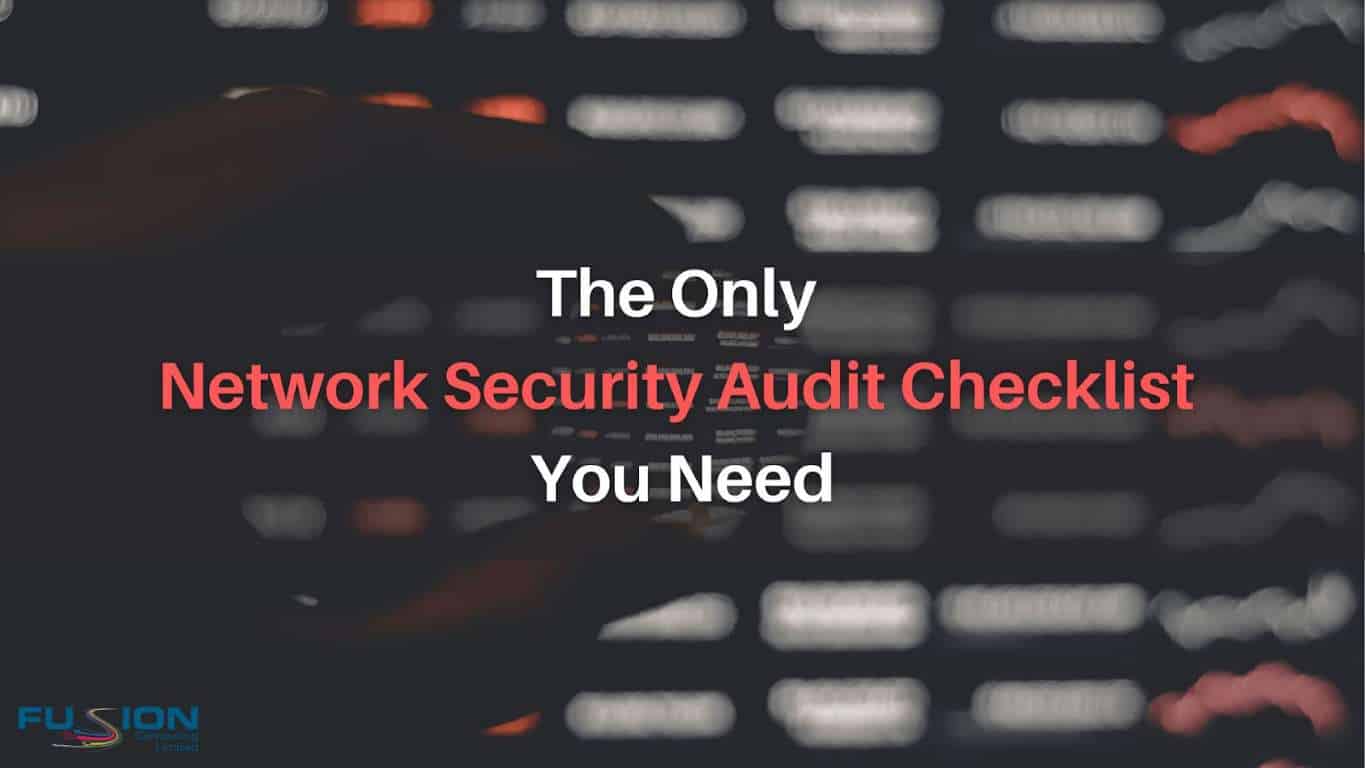
In order for your network to remain strong and protected, you need to perform a network security audit at least once per year. But what is an audit and how do you perform one?
Security audits are a type of security assessment that IT teams use to make sure their network is secure from any threats or vulnerabilities. An audit will analyze certain qualities of your network like overall performance and your team’s management practices. It can also reveal security gaps, and the most efficient allocation of resources to close vulnerabilities.
But how do you know what to look for in your network security audits? Having a security audit checklist in place can help your audit go more smoothly.
Network Security Audit Checklist
Use our security audits checklist template for your own internal audit. Simply copy and paste the checklist below to get started.
- Analyze current security measures in place
- Conduct a risk assessment that includes processes, applications, and functions
- Thoroughly review of all policies and procedures
- Examine all controls and technologies that protect your networks’ assets
- Firewall configuration review and penetration tests
Read below to learn how you can carry out the audit and what you should cover.
| 84% of Canadian SMBs Are Vulnerable to Spoofing
Give your IT the ability to tell apart friend from foe (and not share sensitive data with hackers) |
Who Should Perform Your Network Security Auditing?
Network security audits should be performed by someone on your IT team since your IT staff has the most experience using your network. Audits are a big undertaking and you should gather a team of your most knowledgeable IT employees to help with the necessary steps.
Security Auditing Checklist: What to Include in Your Audit
A network security checklist should cover the complete gamut of the deployed IT hardware and software. Racks, routers and repeaters are obvious, but you need to include everything from your IoT infrastructure to surveillance cameras and premises surveillance system too.
Start by defining the scope of your audit, which includes a list of the devices and networks covered by the audit. Broadly, here are some things your network audit checklist should include.
#1 – Analyze Current Security Measures in Place
An IT security audit checklist is incomplete without an analysis of the security measures you already have in place. Security measures are the way in which you protect your network from harmful attacks like malware and other security breaches. These measures include anti-malware software, password and data management, and more.
As part of your network auditing checklist, you must analyze and test these measures in order to evaluate how well they can protect your network from potential security threats or cyber attacks.
#2 – Conduct a Risk Assessment That Includes Processes, Applications, and Functions
An internal security audit checklist should also include a risk assessment. Once you have analyzed all network security measures in place and how strong they are, start assessing the risk of your internal processes, applications, and functions that are meant to protect your network. Consider:
- What process, applications and functions are most vulnerable to attack
- What are the potential consequences of a security breach
#3 – Thoroughly Review All Policies and Procedures
Next up on your network security audit checklist is a review of all your internal protocols to make sure there are no areas of weakness in your data security. Your internal protocols are the policies and procedures that govern how your employees use your network.
For instance, an “internet access policy” dictates how they are allowed to use the internet while at work. It also includes password management and other security-related protocols, like protecting sensitive information.
All policies and procedures should be regularly reviewed to find any weaknesses or areas where the threat of an attack is high. Your information security audit checklist can help you determine those areas.
#4 – Examine All Controls and Technologies That Protect Your Networks’ Assets
Now it’s time to check the controls and technologies that are meant to protect your network and its assets. This step in your security checklist helps you understand how well these technologies are protecting your network’s assets and whether there are any vulnerabilities.
So, for instance, if your servers are running old, unsupported OSes or lacking the latest security patches, you should know about it.
The examination should include all the software you use, networking equipment, virtual private networks (VPNs) and your network management processes.
#5 – Firewall Configuration Review and Penetration Tests
Lastly, your network security assessment checklist should include a review of your access control systems and penetration testing. These are the last steps to help defend your network against potential attacks and are meant to help you detect and address any weaknesses in your network security.
Not all organizations maintain the capacity to perform effective penetration testing in-house, in which case working with an expert security company is advisable.
| Learn More About Network Security: |
Start Your Cyber Security Audit Today
The security of your network should be of utmost importance to your teams and to your company in general. Start by identifying the scope of your audit, and use our checklist as you work through each step carefully.
Once your audit is complete, you’ll rest assured knowing your network is secure and safe from potential attacks and data breaches.
For a limited time we’re offering a FREE assessment of your network security.


